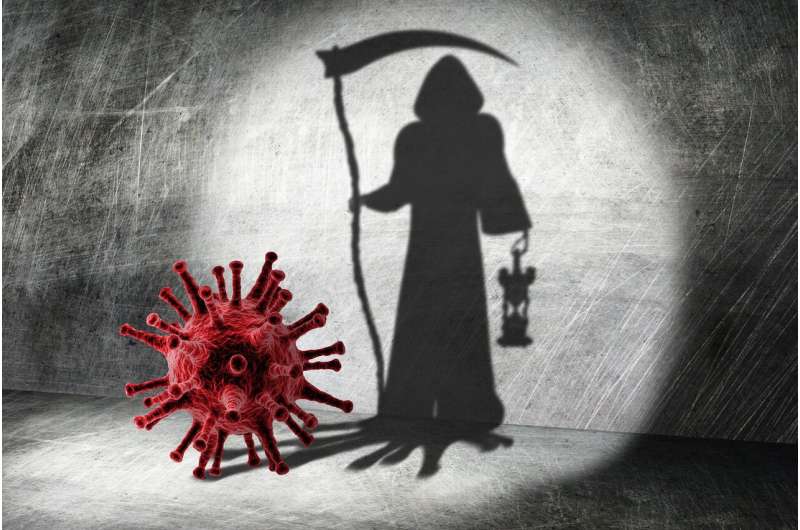States slow to implement stay-at-home orders saw higher rates of COVID-19 deaths

As the COVID-19 pandemic spread across the United States, governments at the state and local levels issued emergency declarations and shut down schools. With no treatment and no vaccine, this was seen as the best way to stop the spread of the SARS-CoV-2 virus. Researchers from Children's Hospital of Philadelphia (CHOP) and the University of Pennsylvania's Perelman School of Medicine have conducted one of the first studies to measure the efficacy of social distancing in the early days of the COVID-19 pandemic. They found that states that were slow to implement such orders saw higher COVID-19 death rates.
The findings were published this month in Clinical Infectious Diseases.
Researchers analyzed more than 55,000 COVID-19 deaths across 37 states between January 21, 2020 and April 29, 2020. They tested the association between the timing of emergency declarations and school closings with 28-day mortality. The findings showed that each day of delayed intervention lead to a 5 to 6% increase in mortality risk. Even when excluding New York and New Jersey to account for the impact of excess deaths from the New York City area, the models still showed similar results.
"Before this study, we assumed social distancing worked based on modeling and studies of prior pandemics, but we didn't have substantial quantitative data to show its effectiveness for COVID-19," said Nadir Yehya, MD, lead author and Assistant Professor in the Division of Critical Care Medicine at CHOP and the Hospital of the University of Pennsylvania. "Our analyses demonstrate that states that issued emergency declarations earlier helped curb the spread of the disease. These results confirm how important it is to implement social distancing measures early to reduce Covid-19 deaths."
The researchers were able to adjust for multiple confounders, including population density, age, and demographics, but were unable to adjust for potentially important confounders, such as outbreaks in long-term care facilities. Nor did their data explore individual behavior or the association between the duration of social distancing orders and outcomes.
"The implementation of social distancing measures is fundamentally political, as the process is decided upon by elected officials," Dr. Yehya said. "Real-time, scientific evidence of the efficacy of these measures will be helpful for informing future policy decisions."
More information: Nadir Yehya et al, Statewide Interventions and Covid-19 Mortality in the United States: An Observational Study, Clinical Infectious Diseases (2020). DOI: 10.1093/cid/ciaa923



















